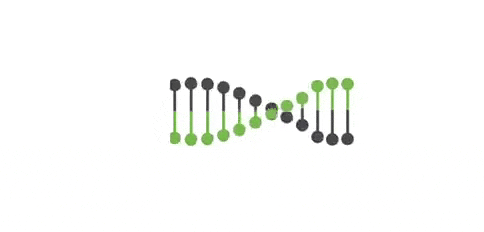
Darwin Analytics vs. SAP BDC, Salesforce Agentforce, and ServiceNow Agent Platform: A Comprehensive Comparison of Agentic Orchestration Approaches
In today’s fast-evolving enterprise performance management (EPM) and business intelligence (BI) landscape, organizations must decide how to weave advanced analytics, artificial intelligence (AI), and data orchestration into their workflows without upending existing systems or facing steep costs. Darwin Analytics, built on a hyperscalar serverless architecture with flexible AI integration that allows leveraging the latest large language model (LLM) advances, offers a distinctive approach compared to SAP Business Data Cloud (BDC), Salesforce Agentforce, and ServiceNow’s Agent platform. Darwin emphasizes agentic orchestration, pulling data from any source to a customer’s preferred data store and feeding it into any EPM or BI client via a canonical model, common workflow, centralized calculation engine, and observability—all unified in a single user interface (UI). This blog explores how Darwin’s pragmatic, flexible, and innovation-friendly strategy compares to its competitors, focusing on ease of use, adoption flexibility, and value delivery with minimal disruption, while addressing ServiceNow’s claim to orchestrate agents across platforms and SAP BDC’s Databricks integration.
Understanding the Contenders
Let’s outline the key players and their approaches:
- Darwin Analytics: Built on a hyper scalar serverless architecture with flexible AI integration that allows leveraging the latest LLM advances, Darwin focuses on agentic orchestration—managing data flows and quality across diverse sources and feeding them into any EPM (e.g., SAP BDC, Oracle EPM Cloud, Anaplan) or BI tool (e.g., Tableau, Power BI). Its agnostic design supports any data store, enhancing existing systems without requiring replacements. With a canonical data model, common workflows, an AI-driven calculation engine, and observability tools in one UI, Darwin simplifies complexity while fostering innovation.
- SAP Business Data Cloud (BDC): Recently announced as SAP’s next-generation cloud offering, SAP BDC unifies financial, operational, and external data for planning, reporting, and decision-making. Built on SAP’s cloud infrastructure with native Databricks integration, it leverages AI-driven insights and connects tightly with SAP ecosystems like S/4HANA, though its scope remains SAP-centric.
- Salesforce Agentforce: Salesforce’s AI evolution, Agentforce deploys autonomous agents to enhance customer relationship management (CRM) across sales, service, marketing, and commerce. Powered by Data Cloud and the Atlas Reasoning Engine, it excels in real-time data processing and task automation, but it’s deeply tied to Salesforce’s ecosystem.
- ServiceNow Agent Platform: ServiceNow’s agentic approach targets IT service management (ITSM), HR, and operational workflows. Its AI Agent Orchestrator and Studio enable agent creation for tasks like ticket resolution, with recent claims suggesting it can orchestrate agents from its platform and others, though its focus remains operational rather than EPM or analytics-driven.
Darwin Analytics: The Pragmatic Enabler
Darwin Analytics excels with its flexibility and compatibility, avoiding the ecosystem-specific constraints of its peers. Its agentic orchestration pulls data from any source—legacy databases, modern cloud platforms, or hybrid setups—and directs it to the customer’s chosen data store, whether cloud-based, on-premises, or another provider. This agnosticism extends to its support for any EPM or BI client, making Darwin an enhancement layer that bolsters existing investments rather than demanding a full overhaul.
The platform’s architecture revolves around key components:
- Canonical Model: Ensures data consistency across diverse sources, reducing integration friction.
- Common Workflow: Streamlines process management across systems in one UI.
- Centralized Calculation Engine: Powered by a hyperscalar serverless architecture with flexible AI integration, it delivers fast, AI-driven results.
- Observability: Offers visibility into data flows and agent performance.
- Single UI: Consolidates features for ease of use.
Darwin’s pragmatic ethos enhances tools like SAP BDC, Oracle EPM, or Excel-based processes, minimizing disruption, reducing change management risks, and controlling costs. Its compatibility with AI agents from SAP BDC, Agentforce, and ServiceNow positions it as an agile enabler, allowing phased adoption of innovations.
SAP BDC: The Modern SAP Contender
SAP Business Data Cloud (BDC), a cloud-native evolution of SAP’s offerings, unifies financial, operational, and external data for planning, reporting, and decision-making. Built on SAP’s cloud infrastructure, it integrates natively with Databricks, leveraging Databricks’ data engineering and AI capabilities to enhance analytics and machine learning within the SAP ecosystem. This partnership enables “zero-copy” data sharing, allowing SAP data to stay in its environment while being accessible to Databricks’ advanced tools like Unity Catalog and Mosaic AI, offering additional flexibility for organizations to blend SAP and non-SAP data. However, this integration can introduce complications—connecting Databricks to BDC may require additional custom development and integration efforts, especially for organizations with complex, non-SAP-centric data landscapes, potentially increasing setup time and costs.
Despite this flexibility, SAP BDC remains rooted in SAP’s ecosystem, prioritizing tight integration with SAP workflows and systems like S/4HANA. While it supports external data sources, connecting to non-SAP EPM or BI tools often demands extra effort, such as custom pipelines or middleware, adding complexity compared to Darwin’s broader, more open orchestration. BDC’s AI features, while innovative, are tailored to SAP’s scope and lack the cross-platform versatility Darwin provides. In contrast, Darwin offers much more open flexibility, seamlessly supporting SAP platforms—including BDC—where beneficial, without the same level of integration overhead. Darwin’s agnostic design allows it to enhance BDC’s capabilities without being constrained by SAP’s ecosystem, providing a simpler adoption path for diverse environments.
Adoption of SAP BDC may appeal to SAP loyalists but poses challenges for organizations outside that ecosystem. Its implementation could demand significant change management as users adapt to SAP’s UI and processes, with costs tied to licensing, cloud infrastructure, and potential custom development for Databricks integration. While BDC signals SAP’s future direction, it doesn’t match Darwin’s ease of use or flexible adoption across varied setups.
Salesforce Agentforce: The CRM-Centric Innovator
Salesforce Agentforce leverages autonomous AI agents to enhance CRM, powered by Data Cloud and the Atlas Reasoning Engine. It excels in real-time data processing and task automation within Salesforce’s Customer 360 ecosystem, but its scope is narrower than Darwin’s—it’s not designed to orchestrate data across any EPM or BI client. Integration with non-Salesforce tools requires extra effort, and its adoption involves a consumption-based cost model ($2 per conversation) and Data Cloud setup, making it more transformative and potentially disruptive than Darwin’s low-friction strategy.
ServiceNow Agent Platform: The Workflow Specialist
ServiceNow’s Agent platform automates IT, HR, and operational workflows via its AI Agent Orchestrator and Studio, excelling within the Now Platform. Recently, ServiceNow has claimed it can orchestrate agents from its platform and others, positioning itself as a generic orchestrator. This could integrate ServiceNow agents with external systems via APIs or connectors, broadening its reach beyond ITSM/HR. However, this generic orchestration lacks the process-specific depth Darwin provides for EPM and analytics, particularly in data-driven scenarios.
Consider a manufacturing firm monitoring raw material pricing. Darwin could deploy an agent to perform real-time predictive analysis, spotting a pricing trend threatening profit margins. Another agent updates a costing model with supplier data, a third suggests alternative sources, and a fourth sends alerts via Darwin’s UI. This coordinated, data-driven orchestration—rooted in EPM and analytics—leverages Darwin’s canonical model, calculation engine, and observability for precision. ServiceNow’s generic orchestration might connect an ITSM agent to a BI tool’s alert but wouldn’t inherently tie real-time data analysis to EPM processes like costing or forecasting without significant customization, highlighting its operational rather than analytics focus.
Adoption of ServiceNow’s platform is smooth for existing users but complex for outsiders, with costs tied to licensing and customization. Its generic orchestration broadens appeal but doesn’t match Darwin’s tailored EPM and BI focus or disruption-minimizing strategy.
Comparative Analysis: Key Dimensions
- Flexibility and Compatibility
- Darwin: Agnostic design supports any data source, store, EPM, or BI client, enhancing tools (including SAP BDC) with open flexibility and compatibility with agents from SAP BDC, Agentforce, and ServiceNow.
- SAP BDC: Optimized for SAP with Databricks integration for added flexibility, but requires custom development for non-SAP setups, limiting openness compared to Darwin.
- Agentforce: Tied to Salesforce, challenging for external EPM/BI connectivity.
- ServiceNow: Broadens reach with generic orchestration, but lacks native EPM/BI compatibility.
- Agentic Orchestration
- Darwin: True, data-driven orchestration with a canonical model, common workflow, and centralized engine, unifying EPM and BI processes (e.g., real-time pricing analysis and action).
- SAP BDC: Enhanced by Databricks but limited to SAP-specific functions, not as broadly orchestrative as Darwin.
- Agentforce: CRM-focused automation, not broad orchestration.
- ServiceNow: Generic orchestration across platforms, lacking EPM/analytics process depth.
- Ease of Use
- Darwin: Single UI simplifies management and reduces silos.
- SAP BDC: Complex for non-SAP users, with added integration steps for Databricks.
- Agentforce: Low-code tools require Salesforce familiarity.
- ServiceNow: Intuitive within its platform, less so for external orchestration.
- Adoption and Change Management
- Darwin: Enhances existing systems, minimizing disruption.
- SAP BDC: Significant change for non-SAP setups, with Databricks integration adding complexity.
- Agentforce: Transformative within Salesforce, disruptive outside.
- ServiceNow: Smooth for users, but generic orchestration adds complexity for EPM/BI.
- Cost Perspective
- Darwin: Leverages existing investments, controlling costs.
- SAP BDC: High costs with licensing, infrastructure, and potential Databricks customization.
- Agentforce: Consumption-based with Data Cloud overhead.
- ServiceNow: Hybrid pricing, with customization costs for orchestration.
- Innovation Enablement
- Darwin: Flexible AI integration leverages the latest LLM advances, fostering innovation.
- SAP BDC: Enhanced by Databricks but limited to SAP’s AI scope.
- Agentforce: Cutting-edge within Salesforce.
- ServiceNow: Innovates in ITSM/HR, less in EPM/BI analytics.
Darwin’s Unique Value Proposition
Darwin Analytics excels as a pragmatic enabler, addressing SAP BDC’s SAP-centricity, Agentforce’s CRM focus, and ServiceNow’s generic orchestration limitations. Its canonical model ensures data consistency, while its workflow and AI-driven engine—powered by a hyperscalar serverless architecture—streamline EPM and BI processes, like resolving margin threats in real time. Unlike SAP BDC, which gains flexibility from Databricks but introduces integration complexity, Darwin offers open flexibility with minimal overhead, enhancing SAP platforms—including BDC—where beneficial. Observability builds trust, and the single UI reduces complexity.
Darwin’s flexible AI integration ensures compatibility with any AI product (including agents from BDC, Agentforce, and ServiceNow), avoiding lock-in. This contrasts with ServiceNow’s broad but shallow orchestration and SAP BDC’s Databricks-enhanced but SAP-bound approach. Darwin minimizes disruption by enhancing existing tools, enabling phased adoption—unlike the more forceful shifts of its competitors.
Practical Implications for Enterprises
- SAP BDC Users: Darwin extends BDC with non-SAP BI tools and modern data stores, simplifying Databricks integration.
- Salesforce Customers: Darwin pairs Agentforce with EPM/BI integration.
- ServiceNow Adopters: Darwin ties operational workflows to financial analytics, surpassing ServiceNow’s generic scope.
- Mixed Environments: Darwin unifies disparate tools with data-driven orchestration.
For a retailer using SAP BDC, Tableau, and ServiceNow, Darwin could orchestrate real-time pricing alerts, cost updates, and supplier suggestions, integrating ServiceNow’s data—all without replacing systems or wrestling with BDC-Databricks complexities.
Conclusion: Darwin as the Agile Future
Darwin Analytics redefines agentic orchestration with a flexible, EPM- and analytics-focused alternative to SAP BDC, Salesforce Agentforce, and ServiceNow’s Agent platform. Its data-driven approach—exemplified by real-time margin protection—outshines ServiceNow’s generic orchestration and SAP BDC’s Databricks-enhanced but constrained flexibility, offering precision and openness. Built on a hyperscalar serverless architecture with flexible AI integration, Darwin enhances investments, minimizes disruption, and embraces innovations, making it an agile value enabler for today and tomorrow.


Leave a Reply